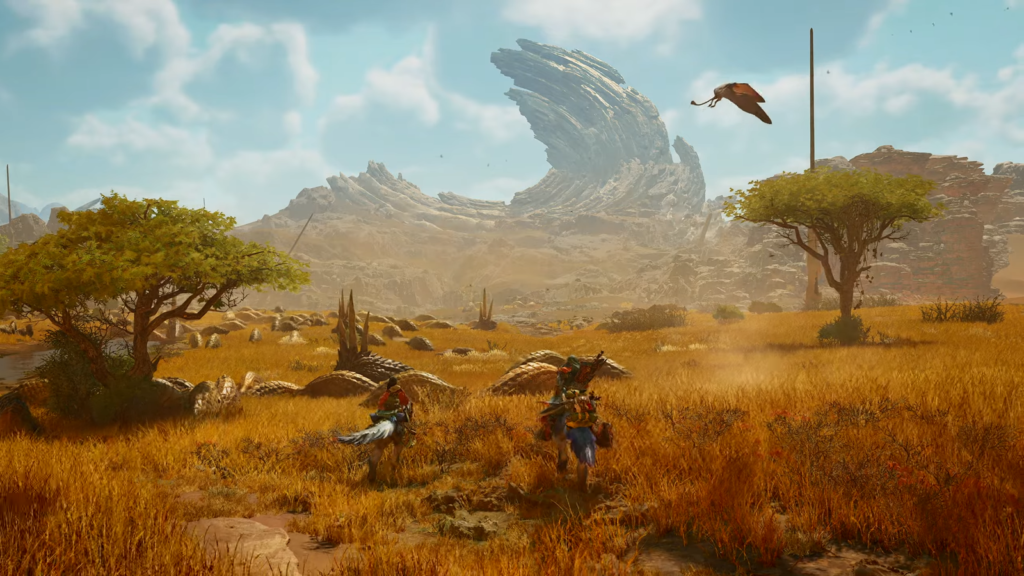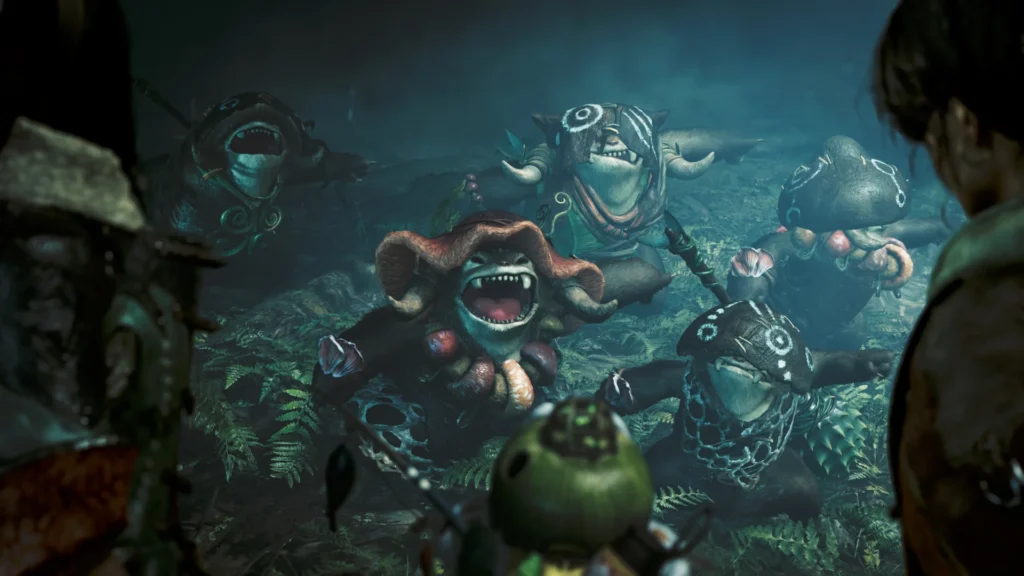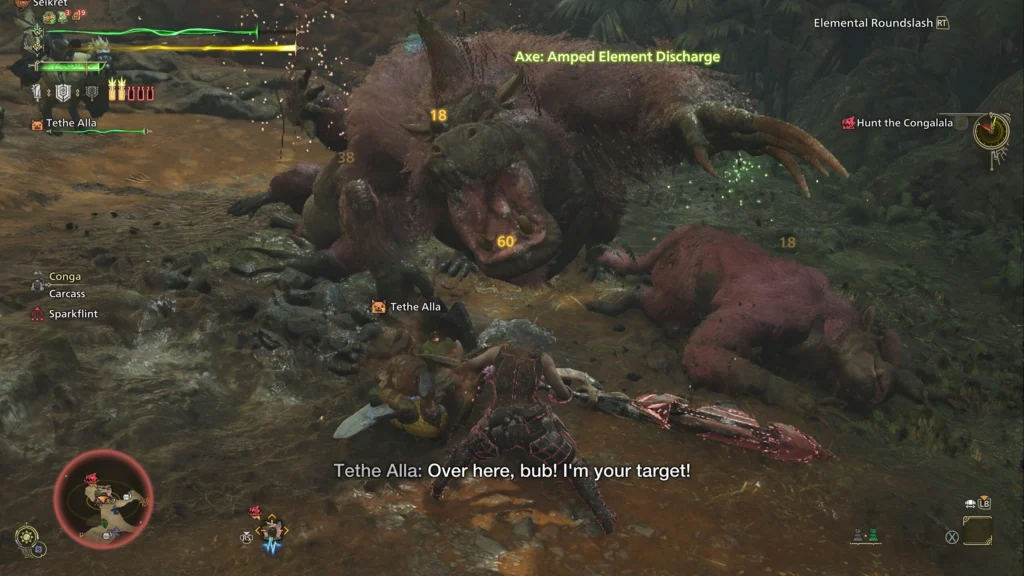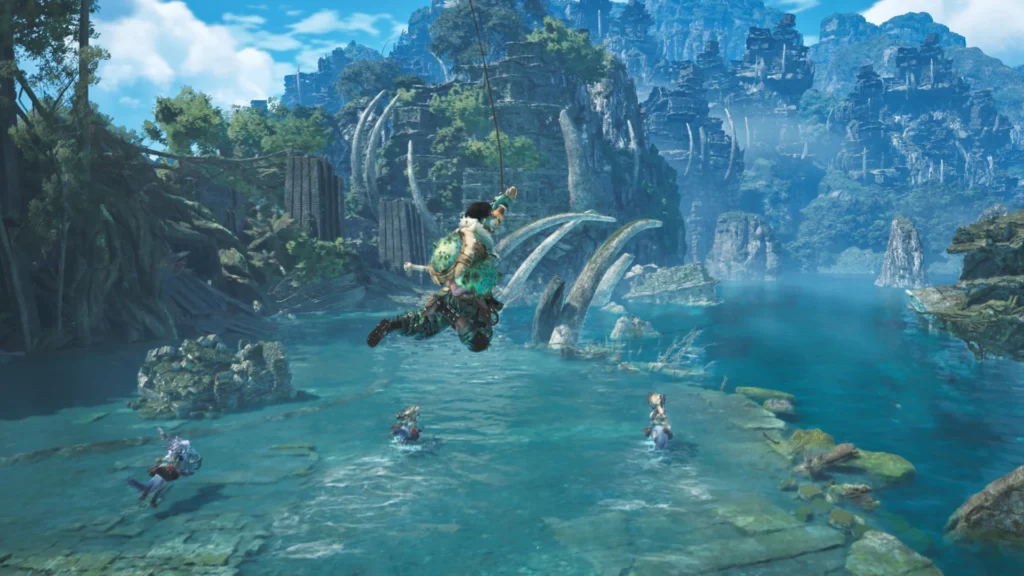The newest installment in the Monster Hunter series refines its mechanics in thoughtful ways, making the experience more accessible without sacrificing fun.
Following the success of Monster Hunter: World, which opened the series to a wider audience in 2018, and Monster Hunter Rise, which introduced the Wirebugs in 2021, Capcom’s next move in Monster Hunter Wilds is designed to build on this newfound fanbase. The game refines the process of slaying massive creatures and turning them into useful gear, making it faster, more intuitive, and less fiddly. However, the game feels somewhat lacking in challenge, even at launch, with little demand for strategic equipment choices. Still, despite the relatively easy monsters, the tweaks to combat make fighting them more satisfying than ever.
One major change is the structure of the game itself. The story isn’t just a shallow excuse to kill monsters; there’s a sense of purpose in the narrative. While the plot itself isn’t groundbreaking, it introduces engaging characters like Gemma, the enthusiastic engineer; Alma, the compassionate handler; and Erik, the quirky biologist. Their interactions throughout the story make the journey more immersive, and the well-animated cutscenes bring their personalities to life. This character-driven approach makes the campaign more engaging than previous Monster Hunter titles.
The streamlined structure also means the campaign is considerably shorter than expected. I finished the story in just 15 hours, without needing to replay any battles, as initial encounters provided enough materials to upgrade my gear. Compared to the 40+ hours needed to finish World, the shift toward a quicker, more approachable experience is evident. For newcomers, this makes the game more accessible, but for veterans like myself, I found the lack of difficulty a bit disappointing. There wasn’t a moment where I needed to carefully consider my equipment or adjust my strategy to take on tougher monsters.




After the credits roll, there’s still plenty of content, and this is where the more significant changes to the Monster Hunter formula become evident. Gone are the days of returning to a separate town between each hunt. Now, everything you need is right there in the field, with seamlessly connected areas. Whether you’re hunting in a fiery basin or a frozen mountain peak, you can travel quickly without the need for long loading screens.
Convenience tweaks are present throughout the game. Buffs from food now last a set time after eating, no longer ticking down while you’re in camp. These small changes remove much of the tedium without sacrificing depth. The result is a smoother experience where you can quickly check your map, mount your steed, and get back to the hunt.
The environments themselves are visually stunning, with each area shifting through three distinct weather states. For instance, a desert landscape may begin dusty, escalate into a lightning-filled sandstorm, and eventually bloom into a lush, vibrant landscape. While these changes don’t heavily impact gameplay, they do influence the types of monsters that appear, and it’s a joy to see each area look dramatically different depending on the time of day. The only drawback was occasional texture pop-in issues, particularly in some late-game areas.
The monsters in Wilds are mostly fantastic, whether it’s a returning favorite like Gore Magala or a new addition like the flamenco-inspired spider, Lala Barina. The highlight, however, is the Arkveld, a terrifying creature with chain-like appendages, and the imposing Nu Udra, an octopus-like monster whose fiery tentacles are unpredictable and thrilling to fight. The satisfaction of severing each tentacle is unparalleled.
Combat feels better than ever. The key to success in Monster Hunter has always been understanding when to strike and where to position yourself, but Wilds introduces more flexibility, allowing players to adjust mid-combo. This reduces moments where a missed attack would leave you helpless, enhancing the fluidity of the action. The new Focus Mode also adds a layer of strategy, letting players target specific monster parts. When a Wound is created on a monster after sufficient damage, you can unleash a Focus Strike to deal a burst of damage and break it, offering new tactics during battle.
Unfortunately, despite these new features, the game never really presents a serious challenge. Whether hunting solo with the new AI Support Hunters or teaming up with other players, I rarely faced missions that took longer than 20 minutes. Even tougher versions of monsters failed to provide a real test. For a series known for its challenging battles, Wilds feels remarkably easy. There was never a moment where I felt the need to carefully craft a specific armor set or adjust my equipment to overcome a tough foe.
In the post-game, things don’t change much. While the difficulty ramps up slightly, I still only encountered minor issues with armor or damage output a couple of times. After finishing the campaign, I spent another 15 hours completing side quests and another 5 hours crafting the best possible armor set and weapon, leaving me with little to grind for. The loot chase that usually drives me to hunt tougher monsters felt almost too easy, given how quickly I acquired the gear I wanted.
The streamlined difficulty may attract new players, but it also meant that I started to lose interest before hitting 40 hours, a stark contrast to previous Monster Hunter titles where I was eager to keep playing well beyond that point. While Wilds is still packed with content and undeniably fun, its reduced challenge left me craving more.
Some of this could be adjusted through patches, but Wilds feels fundamentally easier than its predecessors. For example, Focus Strikes consistently stagger monsters, offering an advantage after breaking a Wound, and some crafting materials are guaranteed as rewards when hunting specific monsters. These changes, while convenient, make the pursuit of high-level gear feel much quicker than expected.
It’s clear that Wilds is designed to be more welcoming, and this will likely draw in many new players. However, for long-time fans, the lack of difficulty and the fast completion time could lead to early burnout, especially if the post-launch content doesn’t deliver a substantial challenge. There’s a roadmap for future updates, but with only one new monster planned for each of the next two seasons, it may take a while for the true endgame content to arrive.
Monster Hunter Wilds does deserve recognition for its level of customization. Players have more control than ever, from changing weapons mid-hunt to adjusting the size of elements on the UI. You can even tweak the look of your mount and other cosmetic details, and with the ability to wear any version of an armor set, fashion hunters will be thrilled. Online multiplayer has also been improved, with cross-play support and the ability to seamlessly jump from hunt to hunt with friends.
Even if you prefer playing solo, there are useful additions like the Support Hunters, who can fill in for missing players, and the new “Online Single-Player” option, which allows you to request help while still pausing the action. These quality-of-life features are a welcome addition and make the game more accessible, whether you’re a newcomer or a veteran.
Verdict
Monster Hunter Wilds succeeds in refining the series, streamlining the experience, and making it more approachable for newcomers. However, in its attempt to make the game more accessible, it loses some of the depth and challenge that fans of the series have come to love. The combat feels fluid, and the changes to the formula improve the overall experience, but without a real challenge, the excitement fades quickly. Wilds is still a blast to play, but it might not have the lasting appeal that its predecessors did, unless future updates provide the challenge that’s currently missing.

